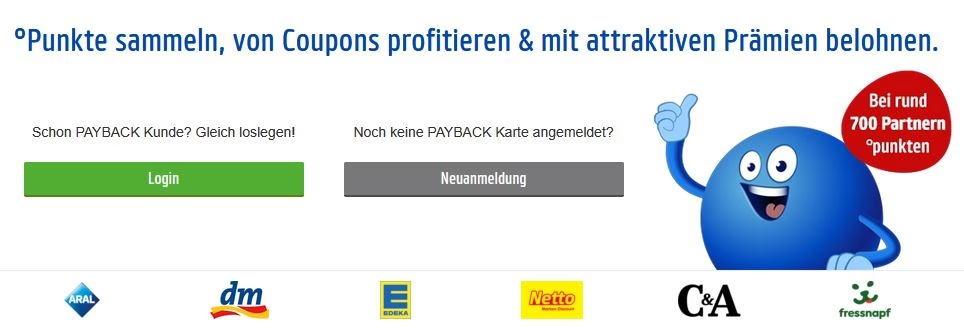Find out in this article how cashback programs influence customer loyalty. Based on a unique event in Germany in January 2025, the behavior of millions of customers was observed.

Is it still possible to build customer loyalty without offering discounts? An exceptional event took place in Germany in January 2025, demonstrating the power of financial rewards in customer loyalty mechanisms. Two major players in the retail sector changed their cashback systems, allowing us to observe consumer reactions. They were surprising, to say the least. I will explain everything in this article.
Contact IntoTheMinds Market Research Agency
Key figures and statistics
- 37% of Payback customers at Rewe in Q4 2024 migrated to Edeka in January 2025.
- 31% of Edeka customers had adopted the “Rewe Bonus” by early 2025.
- 50%: the increase in Payback customers at Edeka in January 2025.
- 30% more customers connected Payback to the Edeka application.
- 1.36 million downloads of the Rewe app in January (compared with 637,000 in December 2024).
- 9 weekly offers on average on Payback at Edeka at the start of the year, compared with 17 offers for “Rewe Bonus.”
- 2 million Payback app downloads in January 2025, compared with 427,000 in December 2024.
- 17% discount on Landliebe jam via Payback versus 34% at Rewe and Hit.
German retail giants Edeka and Rewe have recently revamped their loyalty programs. This has led to massive changes in consumer behavior. Analyzing more than 1.3 million sales receipts provides insight into what has happened.
Customers make decisions based on cashback systems
Primarily, it is important to remember what cashback is. It is a loyalty system that allows you to accumulate points with a retailer, which you can later redeem as a discount. If you are a member of a cashback program, it is in your interest to always shop with the same retailer. Your loyalty is rewarded in cash.
There are also cashback systems common to several brands. These are not new. You’re all familiar with airline loyalty programs. The biggest program in Germany is called Payback, and it has around 60 main partners.
At the end of 2025, the Rewe supermarket chain ended its partnership with Payback. As nature abhors a vacuum, its competitor, Edeka, took its place. The effects were massive: 37% of Payback-affiliated customers who shopped at Rewe in the fourth quarter of 2024 shopped at Edeka in January 2025.
However, Rewe has not been complacent as the “Rewe Bonus” program was launched. And here, too, the launch provided an opportunity to observe how consumers reacted. 31% of customers of competitor Edeka downloaded the Rewe Bonus app. In January, the Rewe app was downloaded by 1.36 million consumers, compared with 634,000 in December 2024.
Loyalty programs have become goldmines of behavioral data.
Customer loyalty programs, a goldmine of…
The statistics I mentioned in the previous paragraph show that loyalty programs are, primarily, behavioral data goldmines. They enable us to observe consumer behavior first-hand and measure their reactions to various stimuli.
In the German context, this data takes on its full meaning. The German consumer’s desire for bargains is in their DNA. The hunt for bargains is even more intense in the current economic climate. All German retailers, with the notable exception of Aldi, therefore, offer a loyalty program. Payback has been around for over 20 years.
With Payback, partners can “follow” customers from one store to the next and enter their private lives. And all with their consent. The marketing applications are endless:
- Test marketing stimuli and observe results live
- Optimize margins through ideal pricing
- Determining promotion levels to maximize purchases and maintain margins
The claim that “data is the new oil” has often been exaggerated, but in this case, I honestly believe that the data collected is a gold mine.
Who benefits from loyalty programs?
When you sign up for a loyalty program, you might expect to benefit financially. At least, that is the promise made to members, who no longer question the logic of the program. And yet, there is reason to wonder. Remember that your consumption data is primarily used to optimize merchant margins. Your purchase history enables them to determine the exact level of promotion to maximize purchase volume.
As a result, the promotions offered do not necessarily correspond to the best deals you can get at any moment. Here are a few examples:
- Edeka offered a 17% discount on Landliebe jam via Payback points in January. At the same time, the same product was on sale at Rewe and Hit at -34%.
- Barilla pasta was on sale at -14% via Payback, while Rewe and Penny offered 57% off.
- Katje’s sweets were 16% off via Payback. Rewe and Penny offered a 45% discount.
In short, loyalty programs do not guarantee the best deals.
Customer loyalty is now no more than a by-product of the financial benefits granted to customers.
Customer loyalty is now no more than a by-product of the financial benefits granted to customers.
Conclusion: a battle of commitment
These movements of consumers from one brand to another, based on loyalty programs, are symptomatic of the times in which we live. In the true sense of the word, customer loyalty no longer exists. Customer loyalty is now no more than a by-product of the financial benefits granted to customers.
Yet, we can see that the data retailers accumulate gives them a competitive edge over consumers. Consumers confide in them to obtain the most attractive discounts and increase their purchasing power. But as in the examples I cited above, this confidence is abused. It is not consumers’ purchasing power that is being optimized, but retailers’ margins.








![Illustration of our post "Generation Z and work: employers’ perceptions [Research]"](https://5cc2b83c.delivery.rocketcdn.me/app/uploads/generation_y_youngsters-120x90.jpg)

